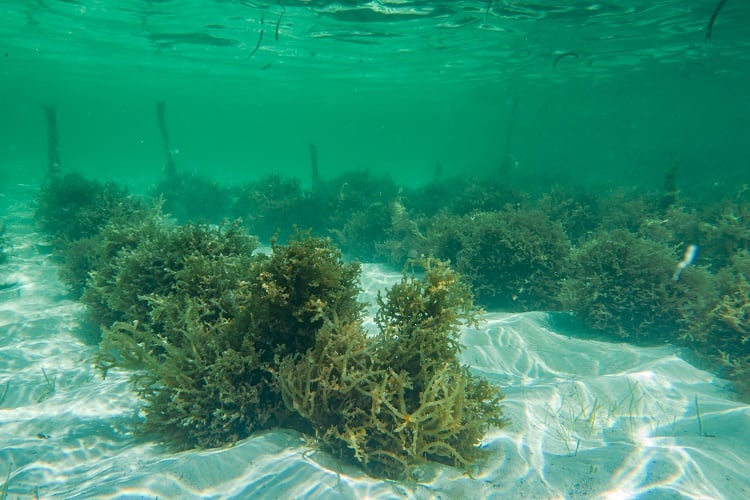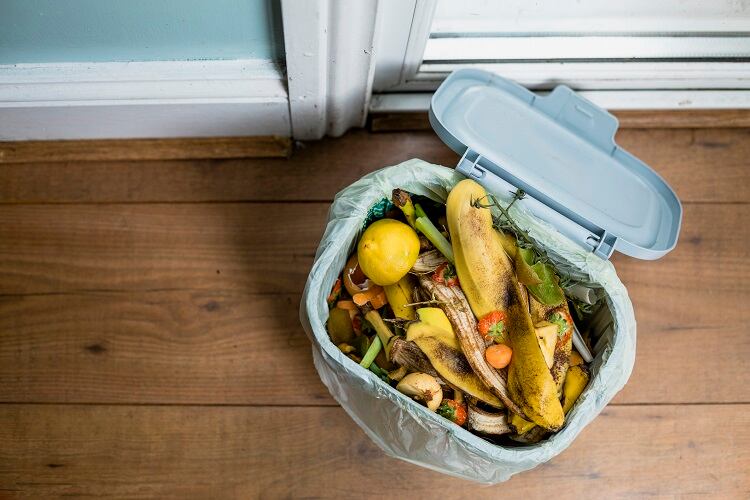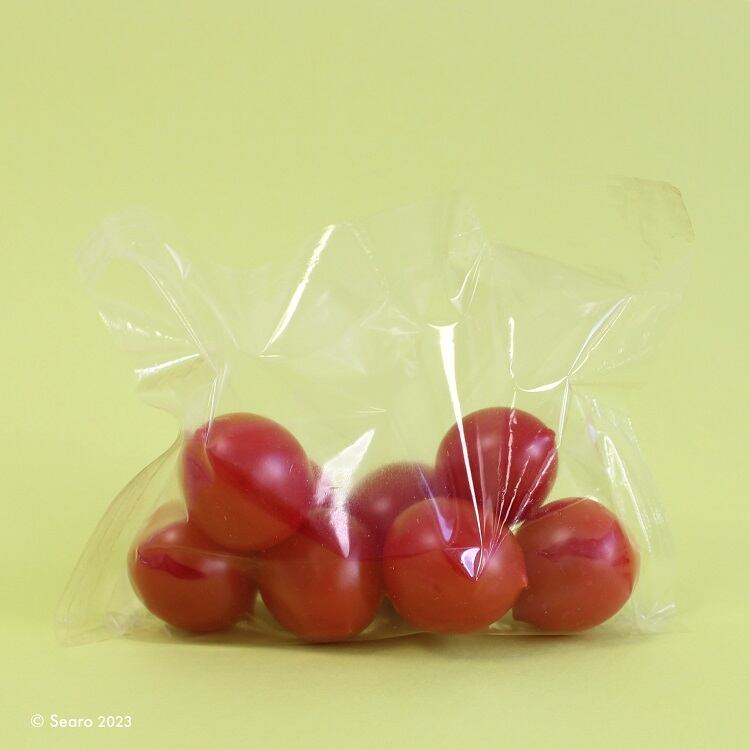In the food and beverage sector, plastic serves an important purpose: it keeps food safe and fresh. But when made from unsustainable materials, or not disposed of correctly, plastic pollution can decimate natural ecosystems.
An estimated eight million tonnes of plastic enter the marine environment every year, and it is estimated that in a business-as-usual scenario, there could be more plastic in the ocean than fish by 2050.
Cambridge-based start-up Searo is developing natural polymers made from seaweed to address the plastic problem, with added benefits for the environment, explained co-founder and co-CEO Francis Field. “In many cases, we’ve been able to extend shelf life. And being biodegradable means that when they’re composted, they contribute to improving soil health.”
Swapping out plastic for seaweed
Being biodegradable was non-negotiable for Searo’s co-founders and co-CEOs Field and Ayça Dündar, who first started the project under the name SoluBlue in 2018.
The duo had heard farmers complaining that plastic was turning up in their soil, having not properly broken down in industrial processing facilities.
“We’re working to make sure that everything we make breaks down very rapidly,” explained Field. Searo’s seaweed-based material just does that, we were told, both in nature and in food waste – either for council collection or home composts.
The company is using polysaccharides in seaweed to develop a natural polymer capable of replacing plastic in multiple forms of packaging, from clear fruit punnets to flexible films. “We’re targeting the really big offenders. The ubiquitous plastic waste that you get everywhere and really shouldn’t ever be made out of plastic in the first place.”
Searo recently inked a supply deal with a major producer of organic seaweed SELT Marine Group. In Bizerte, Tunisia, where the French multinational is headquartered, SELT farms seaweed in Bizerte Lake, harvests and dries it in the sun, before processing the seaweed into feedstock for Searo. The sustainability credentials are obvious, suggested the co-CEO. “They don’t add anything to the seaweed, it doesn’t need any land or freshwater to grow, it doesn’t need pesticides.
“It’s an amazing process that can also capture carbon. And when that carbon is captured and locked into our packaging, a portion goes back to the soil when it is composted. So we’re able to act in some ways as a carbon sink.”
Making seaweed functional for food and consumers
Searo is taking a logical approach to packaging formats by targeting applications the material is ‘inherently good at’. That means we should not expect to see soft drink bottles or microwavable trays, but rather flow wraps, punnets, single use cups, and other formats typically used by consumers for a short period of time. For these kinds of products, performance requirements are relatively low, but is where Searo’s seaweed-derived polymer works best, we were told.

From the consumers’ perspective, it’s important that the material mimics conventional plastic both in appearance and texture, explained Field. Transparency, for example, is key. “Human beings make quick decisions when they buy things, led by desires. They’re drawn to products and want to be able to see what they’re buying.”
And for industry, it’s crucial the innovation moves fast through supply chains and existing manufacturing equipment.
Comparisons with plastic: from disposability to cost
Once the consumer has finished drinking from their single use cup or eaten the last strawberry from Searo’s seaweed-derived punnet, the packaging should be disposed of in either a food waste bin for council collection or into the home compost.
“It performs very well in those conditions, and we’ve been able to show that our material breaks down in a matter of weeks [in home compost],” explained Field. “We ensure that everything breaks down entirely, because we use natural polymers – which means they are non-chemically modified,”
Searo’s packaging breaks down even faster in the ocean, and can be safely ingested by marine life. If it ends up in landfill, it will not degrade so quickly. But it’s not alone there, suggested the co-CEO. “Landfill is really the worst-case scenario for any material to end up in. They are anaerobic environments and nothing breaks down, so we want to avoid our material from ending up in landfill at all costs.”

As to whether Searo will be aiming for price parity with conventional plastic, Field suggested that’s up for discussion. “I’ve always said I don’t think it needs to be priced on par with plastic, but funnily enough, it might end up there.”
Given mounting pressure on industry to decarbonise production and move towards a net-zero future, plastic taxes are on the rise. In the UK for example, a Plastic Packaging Tax came into force last year, which applies at a rate of around £211 (€246) per tonne of plastic packaging with less than 30% recycled plastic.
“We’re seeing plastic prices go up as our prices come down. And as we scale up production, cost will continue to come down.”
There are other hidden costs to plastic consumers may be less aware of, such as costs associated with waste management – paid by government taxes. “You might not see it in the [plastic] packaging of food that you buy, because it’s a fraction of a pence per unit, but you end up paying for it in animals’ ecosystems, biodiversity loss and toxicity.
“If our products were a bit more expensive because there is no need for clean up costs, then I think it’s pretty good value.”
The biggest challenge for Searo, however, is neither technical nor related to cost. The biggest challenge has been, and remains, bringing all parties together – from industry to government, NGOs and institutions – for a common goal: to end packaging pollution.
In the meantime, Searo is working hard to get on shelf. Having moved out of the lab and into pilot trials with industry partners, the start-up continues to scale and expects the launch its first products with partners before the end of the year.
You can listen to FoodNavigator’s interview with Francis Field, co-founder and CEO of Searo, on The FoodNavigator Podcast here, or wherever you access your podcasts.


